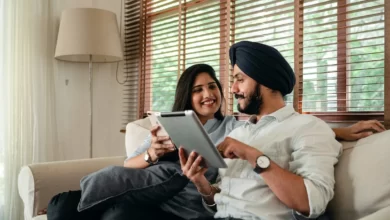The Art of Giving and Receiving: Balancing Generosity in Relationships
In a world that often seems to revolve around self-interest and personal gain, the art of giving and receiving stands as a testament to the enduring power of human connection. From friendships and family ties to romantic partnerships and professional relationships, generosity plays a pivotal role in nurturing and strengthening these bonds. But like any art form, mastering the delicate balance between giving and receiving requires awareness, intention, and skill. In this blog post, we delve into the profound dynamics of generosity in relationships, exploring how to strike the perfect equilibrium to ensure the growth and enrichment of all parties involved.
The Power of Generosity
Generosity goes beyond mere material offerings; it encompasses the selfless sharing of time, attention, understanding, and emotional support. When individuals embody a spirit of giving, they create an environment of trust, reciprocity, and mutual respect. Research has consistently shown that acts of generosity trigger a release of oxytocin – the “bonding hormone” – fostering feelings of empathy and connection. Whether it’s the comforting presence of a friend during tough times or the unwavering support of a partner pursuing their dreams, acts of generosity have a profound impact on the quality of relationships.
The Giving Side: Nurturing Relationships
- Authenticity: Genuine giving stems from a place of sincerity and authenticity. When offering your time, advice, or assistance, ensure that your actions are not driven by ulterior motives. People can often sense when generosity is genuine, and this sincerity strengthens the foundation of your relationships.
- Boundaries: While generosity is admirable, it’s crucial to maintain healthy boundaries. Constantly giving without regard for your own well-being can lead to burnout and resentment. Learning to say ‘no’ when necessary and communicating your own needs helps maintain a balanced dynamic.
- Listening: One of the most significant gifts you can offer is your undivided attention. Active listening shows that you value the other person’s thoughts and feelings. By truly hearing their words, you create a space where they feel understood and cherished.
- Random Acts of Kindness: Small, unexpected gestures can have a profound impact. Sending a heartfelt note, surprising a loved one with their favorite treat, or helping a colleague with a task can brighten someone’s day and foster a sense of closeness.
- Empathy: Understanding another person’s perspective and emotions is a cornerstone of generosity. Empathy allows you to offer support that’s tailored to their needs, showing that you genuinely care about their experiences.
The Receiving Side: Navigating Graciously
- Acceptance: Just as giving is an art, so is receiving. Accepting help, compliments, or gifts graciously is an important part of the balance. Allow yourself to experience the joy of being cared for without downplaying the giver’s intentions.
- Vulnerability: Allowing yourself to be vulnerable when receiving cultivates deeper connections. When you open up about your struggles or aspirations, you give the other person a chance to offer meaningful support and encouragement.
- Expressing Gratitude: Gratitude is a powerful tool for nurturing relationships. Expressing sincere thanks not only acknowledges the gift but also validates the giver’s efforts, encouraging continued acts of generosity.
- Reciprocity: While receiving is essential, maintaining a sense of balance is crucial. Be attentive to the dynamics of your relationships and look for opportunities to reciprocate, whether through emotional support or small acts of kindness.
- Communication: Clear communication is key to navigating the art of receiving. If you feel overwhelmed or uncomfortable with the level of generosity, address it honestly and openly. This helps prevent misunderstandings and keeps the relationship on solid ground.
Striking the Balance
Balancing giving and receiving requires ongoing effort and a willingness to adapt. Here are some strategies to help you strike the perfect equilibrium:
- Self-Awareness: Reflect on your tendencies in relationships. Are you more comfortable giving than receiving, or vice versa? Understanding your inclinations allows you to work consciously on areas that need development.
- Mutual Growth: Aim for relationships where both parties can grow through giving and receiving. Just as you offer your strengths to others, allow them to contribute their unique qualities to your life.
- Open Dialogue: Regularly engage in conversations about each other’s needs, preferences, and expectations. This dialogue ensures that both individuals feel heard and respected, reducing the likelihood of miscommunications.
- Quality over Quantity: It’s not about the number of gifts or favors exchanged but the intention and thoughtfulness behind them. Meaningful gestures, no matter how small, have a more significant impact than superficial displays of generosity.
- Embracing Imperfection: Relationships are complex, and there will be times when the balance tips more toward one side than the other. Embrace these fluctuations as opportunities for growth and learning.
Conclusion
The art of giving and receiving in relationships is a symphony of emotions, intentions, and actions. When executed with mindfulness and care, it enriches our lives in immeasurable ways. By mastering this delicate balance, we create a harmonious dance of generosity that not only strengthens our connections but also fosters a more compassionate and empathetic world. So, let us continue to practice this art, weaving threads of kindness and reciprocity into the tapestry of our relationships, one genuine gesture at a time.









